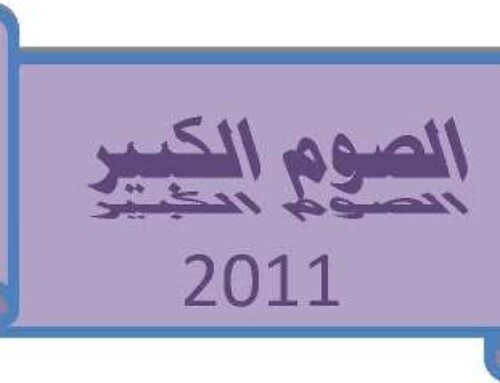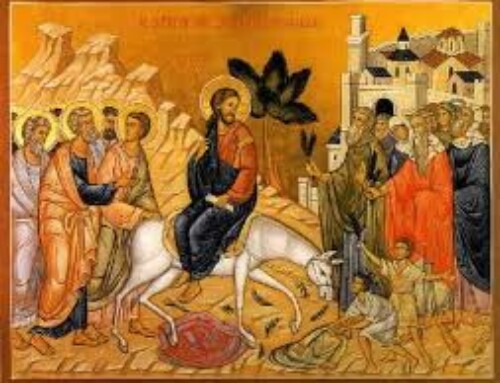THE WORD MAGAZINE, APRIL, 1980 PAGE 9-10
A VERY TIMELY STORY…
LAZARUS COME FORTH!
(Please read John 11:1-45)
by antony gabriel
This thrilling biblical story marks a turning point in the history of salvation. The entire narrative holds us spellbound. It is so rich in imagery and spiritual meaning. The unique Gospel of John tells us of the final days of Jesus as He confronts the world.
The Old Testament and the thought pattern of the Semitic Middle East forms a spiritual canvas for the Gospel of John. We reverberate between the Dawn of Creation and the Tomb of El-Azar (meaning God helps).
The scenery of the narrative is striking and the main features of the Johannine peculiarities are very clear. The images dazzle us: word, light, darkness, stench, weeping, disciple, death, life, side of the mountain, Lazarus, Mary, Martha, etc.
It is no wonder that this Gospel is called by our holy fathers as “the spiritual Gospel”. The tradition embedded here — is living and dynamic. It is the Word.
As we experience Lazarus Saturday and the Holy Week, this episode brings into focus God’s Plan for His creation. We must take a serious look at the tradition embedded in the Gospel of John to fully understand and appreciate the full scope and depth of this miracle story. Therefore, I will try to outline some basic insights into the Fourth Gospel that will help us penetrate more deeply into this extraordinary episode:
1. In this precious book we see a new perspective. The pendulum swings from the emphasis on the corporate to the individual. We see individual encounters between the Master and Peter, Philip, Nathanael, Nicodemus, the Samaritan woman, the blind man, the paralytic, Lazarus, Mary, Martha, etc.
The individuals here are those sanctified through the Word. The titles of honor are appropriated to individuals: He is a friend of the Master; the beloved of God; the elect one. They belong to the realm of truth, the realm of life and light. The peculiar depth of the fourth Gospel lies mainly in the penetrating meaning of the individual in relation with the Master and the Master with the Father. The gist of the sayings must be found in: “Yes, Lord; I believe that you are the Christ. . .”
2. We are amazed how thoroughly this vision of individual encounters with individual souls is carried through consistently. Of all the “signs” or miracles in the fourth Gospel, the crown of all is restoring to life one individual Lazarus. The crown of all miracles according to the Johannine insight is seen in the Resurrection of one single individual.
John’s Christ is shown in anticipating the final Resurrection on an individual scale. . . Martha says that she knows that “her brother will rise on the last day.” But Christ replies that “He is the Resurrection and the life”. What follows is that whoever puts their trust in Him will possess a life which will have no end. We have here an all controlling notion of an individual act of belief. Remember the encounter between the Master and Peter and Thomas in the Post-Resurrection stories.
3. This brings us to another concept in our Gospel — the unique function of believers, disciples— or let us say “sanctified individuals.”
The fourth Gospel has taken up this earliest self-designation of the believer and has given it the place of honor, therefore, in this tradition, the term “disciple” was used as a substitute for all ecclesial titles. Many figures stand out in the forefront: Peter, Nathanael, Philip, Thomas, Lazarus and most strikingly, women — the Samaritan, Mary, Martha and Mary Magdalene, etc.
These disciples are those who receive commission, spirit and authority from the Risen Christ. Unmistakably, John’s vision of the Church unfolds a community in which the priesthood of all believers is its very foundation.
“Disciple” is connected with the very deep aspects of hearing, obeying, learning, following. The Disciples are addressed by Jesus as His friends: “You are my friends;” and “I have called you friends.” (Jn 15:14 &15) In the fellowship of the ecclesial community, the disciples are friends: brothers and sisters.
4. This carried us on to another point which illumines our passage.
“The light shines in darkness” or in the Chapter we are discussing: “If any one walks in the day, he does not stumble, because he sees the light of this world” (Chpt. 11, V. 9) are as typical Johannine statements as ‘The word became flesh”.
“The light shining in darkness” declares what becomes of the world when the world encounters the Creator.
The Gospel describes “the world” as a realm that includes darkness, sickness, death, stench — and sheer madness. There is a gulf in general in the New Testament between the world and the Church and between Revelation and cosmos. Only in God, in manifesting Himself through His word is history unfolded. Salvation history in its essence is the “history” of the Logos who overcomes the world resistance to the Creator. History as taught in this Gospel takes place on earth — within time and space, therefore, the Logos “requires” human opponents as well as human partners.
Light from above sets the disciples in motion. Only in this circle of light do they have the light. History in its final analysis is the history of the Epiphany of the Logos — Past, Present and Future.
We therefore, see the disciples as “Partners” in this process in the divine history of salvation. The disciples are those who hear the living voice of the Shepherd Himself. The disciples hear, believe, obey, follow and the voice of the Master Himself qualifies, limits, and empowers the community under His word! True faith rests on His living voice.
It is this faith by Martha and Mary that sets into motion the divine act of Jesus in calling forth Lazarus. It is His voice that Lazarus hears, obeys and follows. It is the Power of God that overcomes the darkness of death and a light shines from the tomb. It is a prefiguration of His own Victory.
5. “The living Voice”, The Word and this unique insight of John unfolds another dimension to our very important biblical story and has a direct impact upon each of us personally.
We see in the fourth Gospel, the ecciesial community under the Word and “the living voice.” The most characteristic feature of the Church is our relation to the Logos, the Glorified Lord through the Holy Spirit. We have in the Holy Spirit the reality of the new encounter with the Lord in the Post-Easter situation. The Spirit is the one revealing the Word to His own and through them the world. The Holy Spirit is identified with the voice of the Master which speaks to the disciples, therefore, the Word is living. We are dealing with the living voice because the Paraclete is with us. The voice of the Master is living. Only in the Word is the Lord made accessible to us, just as the Spirit makes all things new. Only in His Word is the Heavenly Christ still accessible; only in the Spirit is the Power of Resurrection communicated to us.
Salvation History is actually the history of the Lord Himself communicated by the Word. Those who hear, obey and follow the Logos in the Spirit are His disciples, his beloved friends. Everything that has begun to be in Him is life and this life is the light of men.
From the very beginning of the Gospel of John. we are confronted with the Word. We are transported from the Act of Creation in Genesis to the Revelation of the Word in John. The “sound” of the Word calls the cosmos into being; the same Word becomes Man and the “voice” of the Word calls forth Lazarus. Throughout the Gospel of John we stand on the threshold of Eternity.
CONCLUSION
I have taken you on an excursion into the Gospel of John in order to fully understand our rich narrative.
At creation the Father “speaks” and Man is created by the Word and the Spirit. Man is in Paradise. Man rebelled. He wants something else. Death and stench reigned. Sin embraces us in its clutches through the awful irony of death. Darkness again covers the earth.
The Father in His Eternal Plan speaks again and the Word becomes Incarnate. In our passage we see Christ in the last days of His Earthly Ministry when He enters the darkest aspects of His fallen race. He confronts Death. He weeps for man. He conquers Death.
It was His Word, His living voice that called out Lazarus. It was not in three days but four. Not on Sunday, the first day but on the Sabbath as John Chrysostom tells us. For a little while, He shows us what He intended us to be. and He points to His own Death and Resurrection.
The Word acts again in the spirit and calls forth Lazarus out of the jaws of sin and death — as He calls us forth out of the tombs of all our personal stench.
Hearing His voice, obeying, following creates in us anew a fellowship of love in which we no longer weep at death but sing a new song of discipleship. It is our personal response to the living Word that is communicated to us by the Holy Spirit, in the fellowship of the Church that makes us all His beloved friends, disciples or “sanctified individuals.”
The miracle of Lazarus’ resurrection is a “sign” for all of us as we enter into the final days of the Master during Holy Week, for these should be our last days in the darkness of sin. Again, everything that has begun to be in Him is life and this life is the light of men.
“As Thou said to Martha, 0 Lord,
I am the Resurrection,
Thou did fulfill the word by deed
calling Lazarus from Hades.
Likewise, I implore Thee, 0 Lord of Mankind,
to raise me, dead in Passion;
for thou art compassionate and merciful.”
(Matins)
Father Antony Gabriel is pastor of St. George Church in Montreal, Quebec and Chaplain to the Order of St. Ignatius of Antioch



